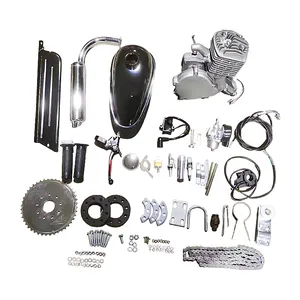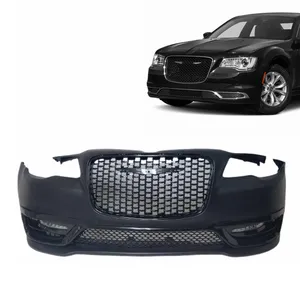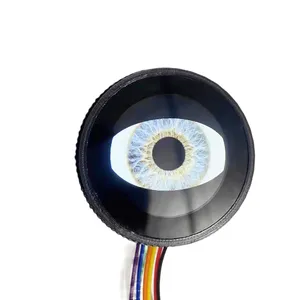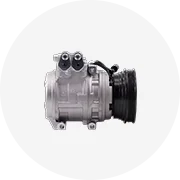Популярное в вашей отрасли






3d подсветка металлических домов и букв, адресный светодиодный дом, 220 изогнутые металлические Цифры
5 042,51 ₽ - 6 051,02 ₽
Минимальный заказ: 1 компл.






Новое гигантское большое украшение для вечеринки, светодиодное освещение, 4 фута, 5 футов, большой шатер с буквами, номер для свадебных мероприятий
2 521,26 ₽ - 9 984,17 ₽
Минимальный заказ: 1 шт.
Доставка за штуку: 16 189,49 ₽







DIY живопись по номерам на заказ акриловая краска по номерам на холсте пейзажная живопись по номерам оптом
Готово к отправке
170,44 ₽ - 249,10 ₽
Минимальный заказ: 5 шт.
Доставка за штуку: 641,41 ₽





Номер для номера дома, цифровой знак на заказ для отеля KTV
Готово к отправке
76,65 ₽ - 88,75 ₽
Минимальный заказ: 10 шт.
Доставка за штуку: 141,20 ₽







Оптовая продажа, картина по номерам «Diy», Цветочная городская краска по номерам на заказ
Готово к отправке
124,05 ₽ - 211,79 ₽
Минимальный заказ: 2 шт.
Доставка за штуку: 758,40 ₽







Роскошные украшения, легкий вес, дизайнерская натуральная доска из МДФ, номер 2, индивидуальный держатель для АДВЕНТ-стойки ручной работы
100,86 ₽ - 151,28 ₽
Минимальный заказ: 100 шт.






Современный стиль, чугунная восьмерка с коричневым порошковым покрытием, отделка, отличное качество для украшения дома и сада
428,62 ₽ - 504,26 ₽
Минимальный заказ: 25 шт.





Высокие по требованию, декоративные металлические буквы и цифры алфавита для дома с индивидуальной упаковкой доступны на экспорт
115,98 ₽ - 403,41 ₽
Минимальный заказ: 50 шт.






Модный стиль креативный дизайн домашний декор ПВХ воздушный поток летающий мобильный новый подарок для ребенка оригами вращающийся колокольчик
352,98 ₽ - 705,96 ₽
Минимальный заказ: 50 шт.






Zakka Love морской забор дом Ландшафтные украшения аксессуары из смолы маленькая вилла
8,07 ₽ - 13,12 ₽
Минимальный заказ: 2 шт.



Настенные часы YUNFEI в винтажном стиле для дома, тихие простые минималистичные украшения для гостиной из розового золота с цифрами, 10 дюймов, на батарейках, 55
1 462,33 ₽ - 1 694,29 ₽
Минимальный заказ: 50 шт.
Связанные запросы:
номер дома на солнечной энергиисветодиодный номер дома на солнечной батарееосвещенный солнечный номер домасолнечный наружный светодиодный номер доманомер клирингового центразнак номера доманержавеющая сталь светодиодный номер дома на солнечной батарееномера уличных домовномера домовномер дома на солнечной батареезнаки номера отеля нержавеющей сталибатарея для освещения номера домазнак торговли гостиничного номераномер дома с подсветкойдизайнерский номер дома






Деревянная круглая подвесная тарелка
Готово к отправке
221,88 ₽ - 393,32 ₽
Минимальный заказ: 5 шт.
Доставка за штуку: 374,16 ₽






Новый стиль, чугунные три номера с коричневым порошковым покрытием, отделка с тиснением, высокое качество для украшения дома
428,62 ₽ - 504,26 ₽
Минимальный заказ: 25 шт.






Отличное качество, 4 дюйма, латунные Номера для дома с 2 винтами для домашнего отеля и офисного декора, доступны на экспорт
504,26 ₽ - 605,11 ₽
Минимальный заказ: 50 шт.






2024 новейший популярный продукт, стильная наклейка для украшения стен для нового дома, кафе, ресторана, бабочки, войлочная доска для заметок
252,13 ₽ - 352,98 ₽
Минимальный заказ: 200 шт.
Доставка за штуку: 69,59 ₽






Набор конфетных цветов для виллы из смолы, с видом на снег, Рождественский Снеговик, красный стиль, подарок для дома
18,16 ₽ - 23,20 ₽
Минимальный заказ: 10 шт.





Лидер продаж, табличка на дверь дома, металлическая табличка с номером, латунные буквы с индивидуальным размером, доступны оптом из Индии
115,98 ₽ - 403,41 ₽
Минимальный заказ: 50 шт.






Кролик, рай, Ландшафтные украшения, милые Мультяшные животные, морковь, дом, кролик, садовые аксессуары из смолы, поделки
4,04 ₽ - 25,22 ₽
Минимальный заказ: 10 шт.






Пейзаж, милая кукла из ягненка, шкатулка для украшения сада, Аксессуары для детского дома, автомобиля, настольный виджет
13,12 ₽ - 17,15 ₽
Минимальный заказ: 10 шт.





HY zakka Love морской забор дом Ландшафтные украшения аксессуары из смолы маленькая вилла
8,07 ₽ - 13,12 ₽
Минимальный заказ: 2 шт.





HY кролик рай пейзаж Декор милые Мультяшные животные морковь кролик дом садовые аксессуары из смолы ремесла
4,04 ₽ - 25,22 ₽
Минимальный заказ: 50 шт.






Цифры для дома в современном стиле из нержавеющей стали
2 521,26 ₽ - 5 546,77 ₽
Минимальный заказ: 1 шт.


Невидимая дверь из нержавеющей стали в Европейском стиле, номер дома, диаметр 10 мм
181,54 ₽ - 282,39 ₽
Минимальный заказ: 500 шт.






Европейский стиль, нержавеющая сталь, невидимая винтовая дверь, номер дома
100,86 ₽ - 504,26 ₽
Минимальный заказ: 500 пар






Новый дизайн, 1 линия, табличка с номером дома, сочетает в себе популярный архитектурный стиль с большими номерами для максимальной видимости
1 252,56 ₽ - 1 991,80 ₽
Минимальный заказ: 200 шт.


2024 DIY деревянный Рождественский Адвент Календарь Дом Форма 25 выдвижных номеров популярный стиль домашний обратный отсчет украшения настраиваемый
504,26 ₽ - 584,94 ₽
Минимальный заказ: 300 шт.
Доставка за штуку: 88,75 ₽






На заказ Открытый Пустой светящийся Стиль Свет Ресторан Бар квартира уличная комната номера дома с подсветкой
Готово к отправке
3 025,51 ₽ - 4 034,01 ₽
Минимальный заказ: 1 шт.
Доставка за штуку: 5 463,06 ₽






Цифры из массива дерева в китайском стиле, 3D табличка, адрес дома, наружная табличка, табличка для отеля, ресторана
998,42 ₽ - 1 603,52 ₽
Минимальный заказ: 2 компл.






Подставки ручной работы в форме сердца для детей, декоративные подставки в натуральном стиле, мозаика «сделай сам»
806,81 ₽ - 1 210,21 ₽
Минимальный заказ: 1 компл.






Китай, 2023, оптовая продажа, популярный стиль, Ретро стиль, 3d цифры для дома, Золотая краска, 3d знак для отеля, дверной знак для отеля
605,11 ₽ - 1 008,51 ₽
Минимальный заказ: 2 шт.





Новый дизайн, светящийся акриловый номер для дома в современном стиле для отеля, номер магазина
1 512,76 ₽ - 2 319,56 ₽
Минимальный заказ: 1 компл.






Неоновые светящиеся рекламные щиты в виде букв по индивидуальному заказу
1 815,31 ₽ - 2 521,26 ₽
Минимальный заказ: 1 шт.






2023, новый стиль, металлический знак с надписями, цифрами дома, светящийся передний и задний буквенный знак 3d для бизнеса
4 538,26 ₽ - 5 042,51 ₽
Минимальный заказ: 1 шт.
Доставка за штуку: 4 410,18 ₽







Номер дома, плавающий номер дома, современный стиль, цементный материал, черная краска, номер знака для дома на улице
Готово к отправке
1 936,33 ₽ - 1 996,84 ₽
Минимальный заказ: 1 шт.
Доставка за штуку: 7 866,32 ₽






3D-табличка с номером в скандинавском стиле
100,86 ₽
Минимальный заказ: 200 шт.
Доставка за штуку: 21,18 ₽






Дверная тарелка в китайском традиционном стиле, латунные Номера для дома с подсветкой, Номера для квартир, Номера для дома
2 521,26 ₽ - 3 227,21 ₽
Минимальный заказ: 2 шт.
Доставка за штуку: 99 841,70 ₽
Самые популярные категории
О стили номеров дома
Alibaba.com предлагает все самое лучшее по качеству. стили номеров дома подходит для различных типов автомобилей. Заказывайте самое лучшее по качеству. стили номеров дома продаются многочисленными сертифицированными производителями, оптовиками и дистрибьюторами с одного из ведущих веб-сайтов электронной коммерции за один клик.
стили номеров дома чаще всего используется в автомобильной промышленности для облегчения передвижения в транспортных средствах. К наиболее известным из них относятся шариковые подшипники, конические роликоподшипники, сферические роликоподшипники, цилиндрические роликоподшипники, поворотные подшипники, игольчатые роликоподшипники и многое другое. Посетите Alibaba.com, чтобы узнать больше о различных типах подшипников.
Без подшипников автомобильная промышленность практически остановилась бы. Именно поэтому эти устройства важны для отрасли. стили номеров дома эффективно повышают общую производительность и эффективность транспортных средств, тем самым устраняя возможность значительных потерь или потерь энергии. Чтобы поддерживать подвижные части с подшипниками в хорошем состоянии, их всегда следует регулярно проверять, а изношенные - заменять без промедления.
Посетите Alibaba.com и ознакомьтесь с различными типами. стили номеров дома продается там через различных сертифицированных производителей, оптовиков и дистрибьюторов. Покупка этих деталей на сайте - очень простой процесс для покупателей. Клиенты могут просто щелкнуть изображения нужных деталей подшипников, чтобы узнать их характеристики. Затем они могут приобрести подшипники с требуемыми характеристиками.
стили номеров дома чаще всего используется в автомобильной промышленности для облегчения передвижения в транспортных средствах. К наиболее известным из них относятся шариковые подшипники, конические роликоподшипники, сферические роликоподшипники, цилиндрические роликоподшипники, поворотные подшипники, игольчатые роликоподшипники и многое другое. Посетите Alibaba.com, чтобы узнать больше о различных типах подшипников.
Без подшипников автомобильная промышленность практически остановилась бы. Именно поэтому эти устройства важны для отрасли. стили номеров дома эффективно повышают общую производительность и эффективность транспортных средств, тем самым устраняя возможность значительных потерь или потерь энергии. Чтобы поддерживать подвижные части с подшипниками в хорошем состоянии, их всегда следует регулярно проверять, а изношенные - заменять без промедления.
Посетите Alibaba.com и ознакомьтесь с различными типами. стили номеров дома продается там через различных сертифицированных производителей, оптовиков и дистрибьюторов. Покупка этих деталей на сайте - очень простой процесс для покупателей. Клиенты могут просто щелкнуть изображения нужных деталей подшипников, чтобы узнать их характеристики. Затем они могут приобрести подшипники с требуемыми характеристиками.




































